A gut renovation is a major undertaking. However, it can make a massive difference in property value and quality of life if executed by the right design team. During gut remodels, specialists strip down the interior of a home to address any issues and optimize it for the owners’ current needs. This process often includes changing the layout, reinforcing damaged structural elements, adding or removing rooms, updating plumbing or electrical systems, and so much more. In doing so, your design firm creates a safe, functional living space that reflects your aesthetic and lifestyle while observing current building regulations. In this post, we outline what to expect during a whole home remodel and explain why homeowners pursue gut renovations. Read on to learn more.
Gut Renovation Considerations
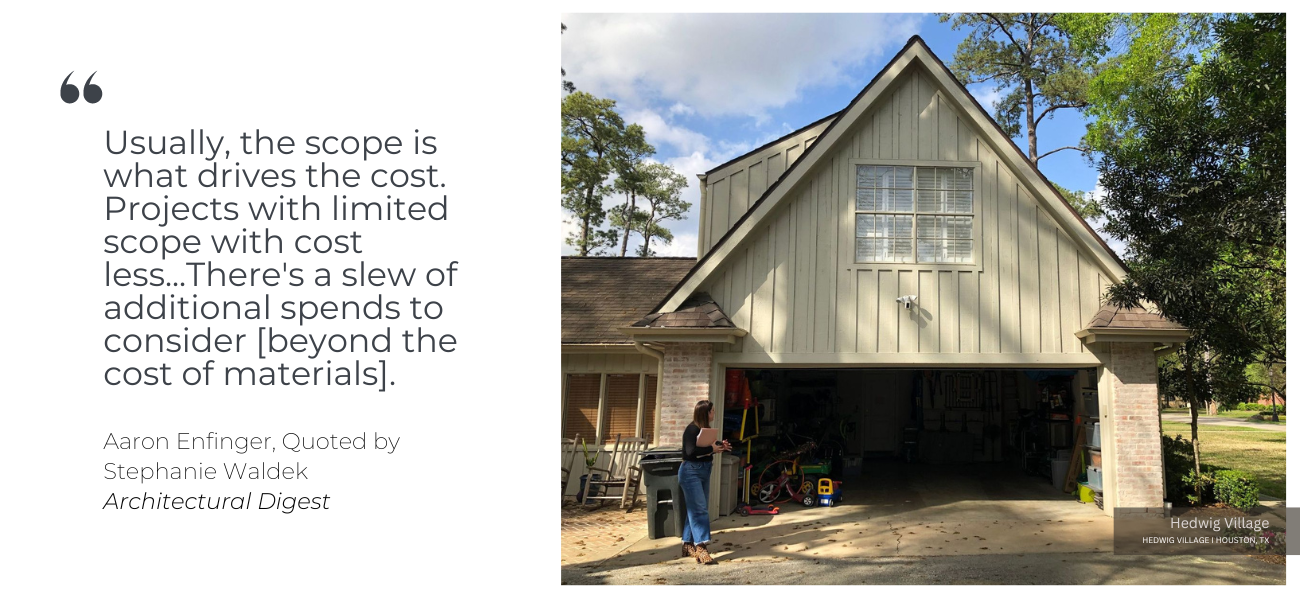
A gut renovation can be complex, time-consuming, disruptive, and expensive — but it can also make a meaningful difference in a homeowner’s life. To make the most of your whole home remodel, it’s essential to start the project with your eyes wide open. Before jumping into a gut remodel, set a budget, pin down your preferred timeline, and determine who will manage your project.
Set Your Budget and Timeline
Of course, one important aspect to consider during a gut renovation is the cost. The price of such a project can vary greatly depending on factors like the size of your home, the extent of the remodel, and the materials you choose to use.
Depending on where you live, the age of your home, its condition issues, and your aesthetic preferences, homeowners should expect to spend anywhere from $50 to $400 per square foot for a complete gut renovation. This figure can fluctuate significantly based on individual circumstances. Quoting NARI’s Aaron Enfinger in an article for Architectural Digest, Stephanie Waldek notes that “‘scope is what drives cost.”‘ It is also what determines the timeline for a project.
The time it takes to execute your remodel will vary depending on scope, location, preferences, and labor or materials availability. Unexpected issues and permitting delays can also extend a project’s timeline.
Hire the Right Residential Design Firm
Hiring a reputable contractor or residential design firm is crucial for the success of your gut renovation project. A skilled team of professionals will guide you through the planning phase. They will help you make informed decisions about design and material choices.
Of course, they will also ensure that all necessary permits are obtained before construction begins. Additionally, they will work closely with you to understand your vision for the space and execute it effectively.
Prepare for Disruption to Your Daily Life
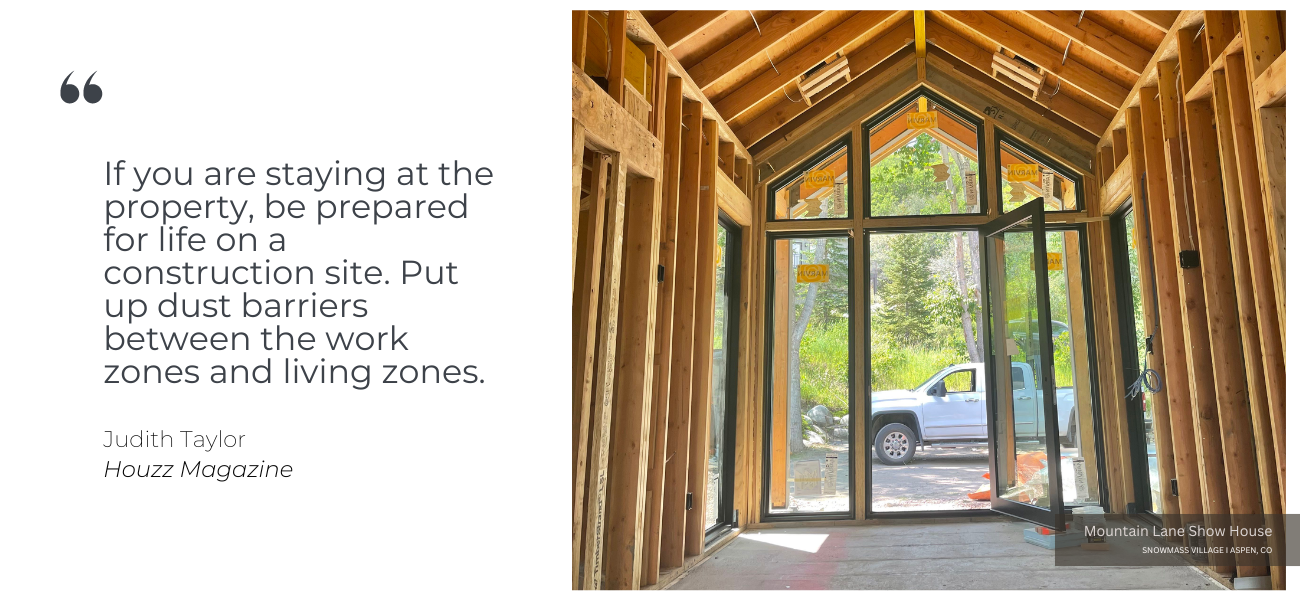
During a gut renovation, be prepared for significant changes in your daily life. As the work progresses, certain areas of your home may become inaccessible, difficult to navigate, or unsafe to enter.
Dust and debris are common during construction, so you must prepare yourself mentally for the temporary inconvenience. Setting realistic expectations and maintaining open communication with your design firm will go a long way in minimizing any disruptions.
While every project is unique, every homeowner should anticipate several months of disruption. Keep in mind that unexpected delays can occur due to unforeseen issues or complications. Patience is key during this process.
Reasons for a Gut Remodel
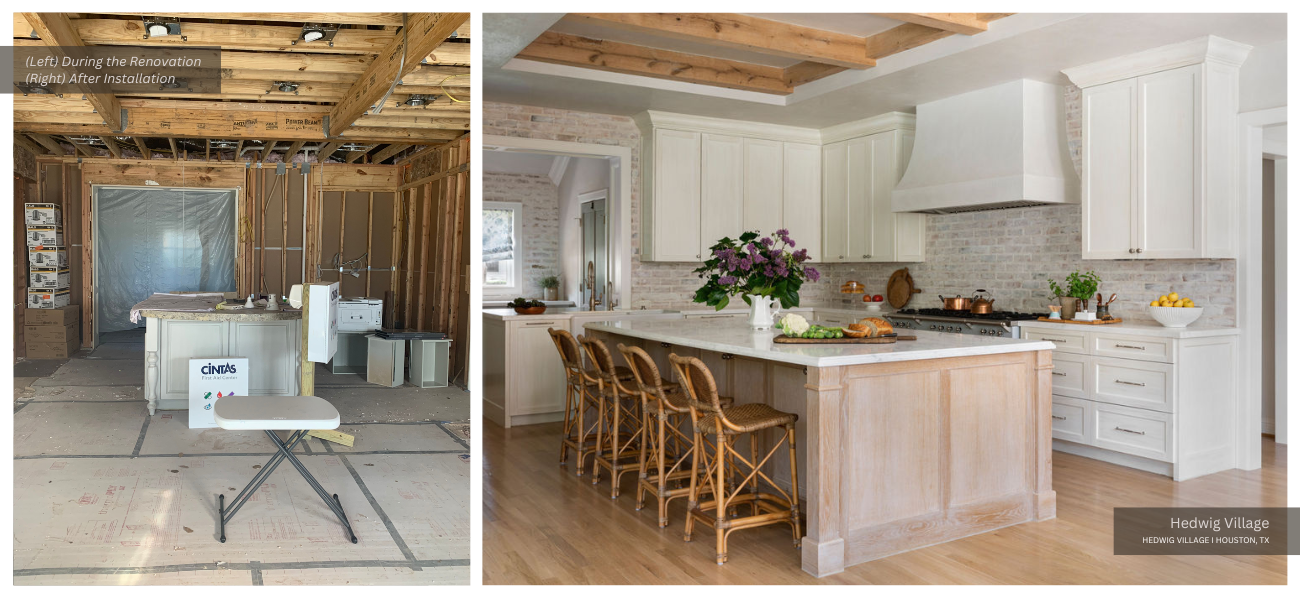
A gut remodel, also known as a complete renovation, is a major undertaking that involves tearing down and rebuilding the interior of a home. While it may seem like a daunting task, there are several compelling reasons why homeowners choose to embark on this journey.
To Remedy Structural Issues
One of the main reasons for a gut remodel is to address structural issues. Over time, homes can develop problems such as sagging floors, cracked walls, or a compromised foundation. These issues not only affect the overall stability of the structure but can also pose safety risks for you and your family. By completely renovating the interior, you have the opportunity to reinforce the structural integrity of your home and ensure its long-term durability.
To Update an Outdated Space
Another common reason for a gut remodel is to update an outdated space. If your home was built many years ago, chances are the layout and design no longer meet your needs or aesthetic preferences.
A gut remodel allows you to start with a clean slate and create a space that reflects your personal style and functional requirements. Whether it’s opening up the floor plan, adding more natural light, or incorporating modern fixtures and finishes, a complete renovation gives you the freedom to transform your home into something truly special.
To Respond to Mold, Asbestos, or Pest Infestations
One of the most common reasons for a gut remodel is to address mold, asbestos, or pest infestations. If your home has sustained significant water damage due to old or faulty pipes, it’s important to take action quickly.
Water leaks can cause extensive harm to the internal structures of a house and may lead to the growth of harmful mold. Mold not only damages the integrity of your home, but it can also pose serious health risks to you and your family. In this case, a complete renovation becomes necessary to eliminate the problem and ensure the safety and well-being of everyone in the household.
Similarly, if you have an older home that is known to contain asbestos or if you discover a termite infestation, a gut remodel is often the best solution. Asbestos, once commonly used as insulation, is now recognized as a hazardous material that poses serious health risks when disturbed. Removing asbestos requires specialized equipment and expertise, making a complete renovation the safest option.
Likewise, termites can wreak havoc on the structural integrity of a home, causing extensive damage over time. A gut remodel allows you to address these issues comprehensively, ensuring that your home is free from any harmful elements.
To Recover After a Natural Disaster
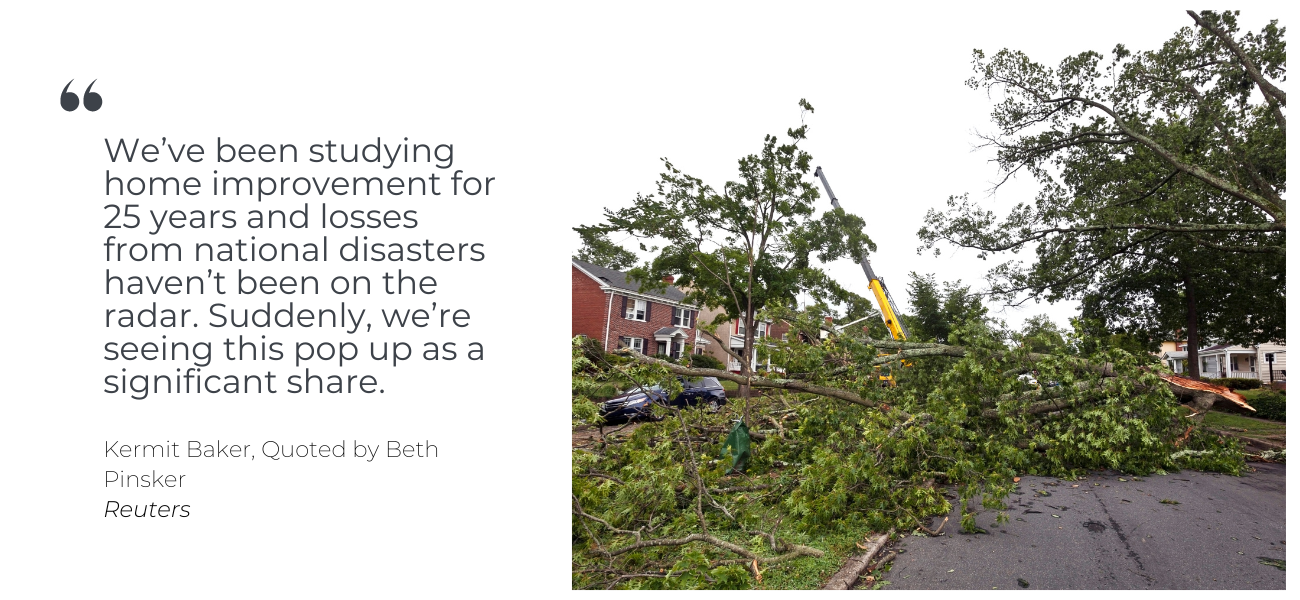
Another circumstance where a gut renovation may be necessary is in the aftermath of a natural disaster. Whether your home has been damaged by a hurricane, flood, or other catastrophic event, addressing that damage might require extensive repairs.
In such cases, a gut remodel becomes essential to restore your home to its pre-disaster condition. It provides an opportunity to not only repair the damage but also make any desired improvements — ensuring that your home is better equipped to withstand future disasters.
Common Costs of a Gut Renovation
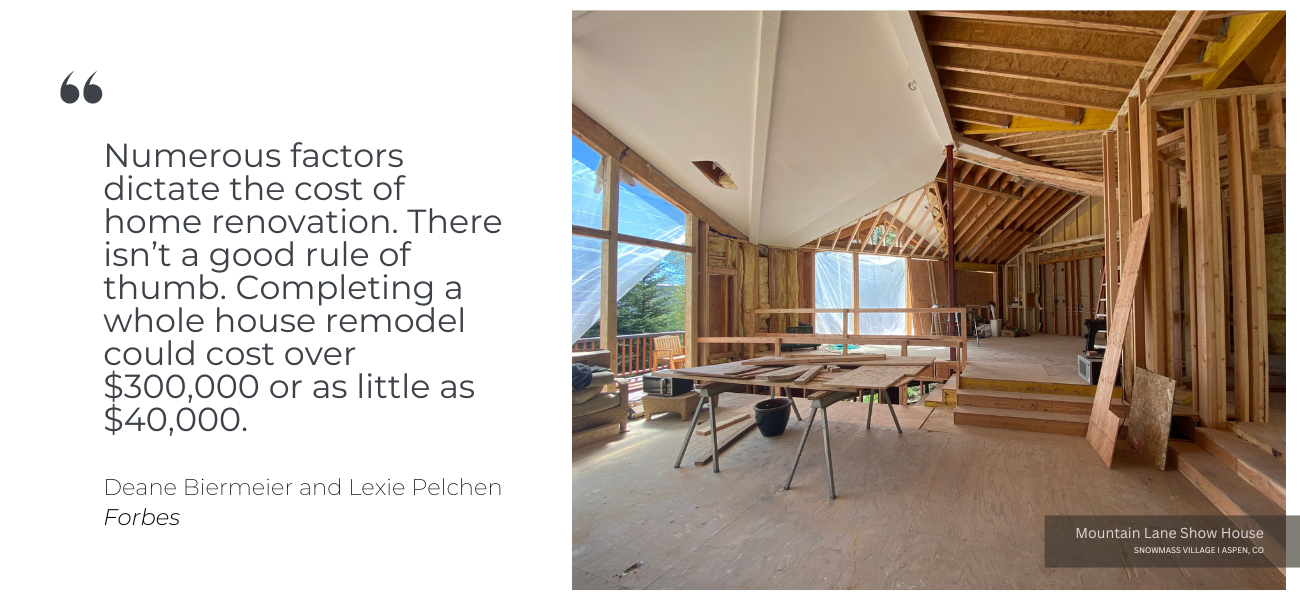
Costs will vary depending on where, how, and with whom you remodel your home. They will also vary depending on your home’s square footage and the complexity of the remodel.
If you work with a design firm, the total cost might be more expensive than managing the project yourself. However, you benefit from their design expertise, procurement team, and vendor relationships. If you choose to DIY the gut remodel and act as your own GC, your costs will probably fluctuate as you source materials and labor.
Without proper experience, remedying your mistakes could end up costing quite a bit more than working with a design firm from the get-go. You might not save money on your home renovation. In most cases, you will spend quite a bit more.
Depending on how you approach the remodel, the following elements could impact your renovation’s overall cost. Bear in mind that some costs can be lowered. For example, you might be able to repurpose existing cabinets, reuse your furniture, or install the same appliances.
- Expert Consultations
- Permitting
- Inspections
- Architectural Drafting Fees
- Interior Design Fees
- Project Management by a GC or Residential Design Firm
- Structural Repairs
- Asbestos, Mold, Lead Paint, Pest, and Other Types of Remediation
- Building Materials
- Drainage Improvements and Other Landscaping
- Demolition and Clean-Up
- Construction
- Plumbing and Electrical Updates
- Furniture, Decor, Fixtures, and Appliances (Plus Procurement)
- Temporary Housing Costs
- Change Orders and Unexpected Issues
Installation
How Long Does It Take to Gut and Fully Remodel a House?
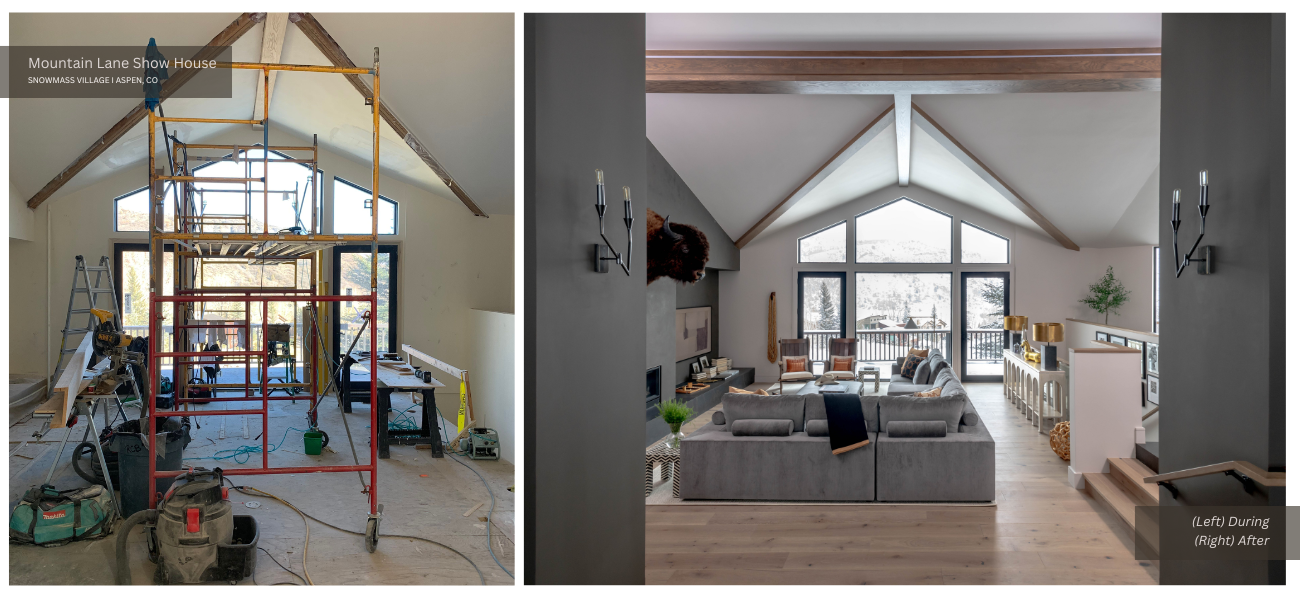
Unfortunately for homeowners, there is no straight answer to this question. A gut renovation could take anywhere from several months to a couple of years. Each project is unique and should be assessed individually. Working with a residential design firm typically provides a much more stable schedule and predictable budget than managing the project on one’s own. Below are a few factors that might impact the duration of your renovation

Project Scope
Firstly, the time it takes to complete a gut remodel depends on the scope of your project. If you only need to make minor changes or updates to your home, the renovation process may take less time compared to a complete gutting and reconstruction of the interior.
For example, moving load-bearing walls and reinforcing the foundation would take longer than simply updating the interior. When considering the scope of your project, it’s essential to assess which areas of your home need renovation and how extensively you plan to change them.
Availability of Materials and Labor
Another crucial factor to consider is the availability of materials and contractors. Acquiring the necessary supplies and finding skilled professionals who align with your vision can sometimes be a lengthy process. It is crucial to allocate sufficient time to source quality building materials within your budget and secure reliable contractors who can bring your dream home to life.
Age and Condition of the Home
Additionally, the age and condition of your house play a significant role in determining the timeline for a full remodel. Older homes often require more extensive work due to outdated systems or structural issues.
Whether you work with a design firm, a GC, or a bunch of subcontractors, your home must meet today’s building codes by the end of the project — just like a new house must. If your property needs major plumbing or electrical upgrades, these tasks alone can add considerable time to the overall construction process.
Interior Design Complexity and Customization
The complexity of your interior design scheme also influences the duration of the project. If you want custom features, intricate finishes, or unique room layouts, expect additional time for detailed craftsmanship and coordination between different tradespeople involved.
Square Footage and Orientation of the Home
Moreover, the size of your home and the number of rooms you wish to renovate will directly impact the length of the remodeling process. A larger space with multiple areas undergoing transformation naturally demands more time than a smaller dwelling with fewer rooms involved.
Unexpected Issues
During any major renovation, previously unanticipated issues can arise. When your contractor opens up walls, they might find corroded pipes or unpermitted electrical work executed by a hobbyist. You might plan on moving walls, only to find out that one is load-bearing and a secondary structural engineering consult is needed.
These issues can delay the installation and completion of your project. As such, it’s essential to pad both your budget and your timeline before renovating. In an article for House Beautiful, homeowner Christine Chitnis recommends “‘taking your initial timeline and doubling it.'”
To summarize, the duration of gutting and fully remodeling a house depends on various factors such as the scope of work, availability of materials and contractors, age and condition of the property, complexity of the interior design plan, size of the home, and potential setbacks along the way.
It is crucial to consider all these aspects when estimating the time needed for completion. By planning carefully, allocating sufficient resources, and maintaining open communication with your design firm, you can transform your house into a dream home while keeping expectations realistic.
Considering a Gut Renovation Project?
As outlined above, a gut renovation is a significant investment of both time and money. However, the benefits are well often worth the cost. By starting from scratch, you have the freedom to design a space that perfectly suits your needs and preferences.
You can open up your floor plan to optimize the flow for entertaining, replace energy-inefficient elements, or resolve major health and safety issues. If planning to age in place or live with an elderly family member, you can also update the space to best serve the evolving needs of your household. A complete renovation allows you to transform your home into the perfect space for your family.
If you are considering a major remodel, read through this post about planning a whole home remodel and download our checklist. Reach out to the team at LUDC with your questions or submit a project inquiry if you are ready to begin.


